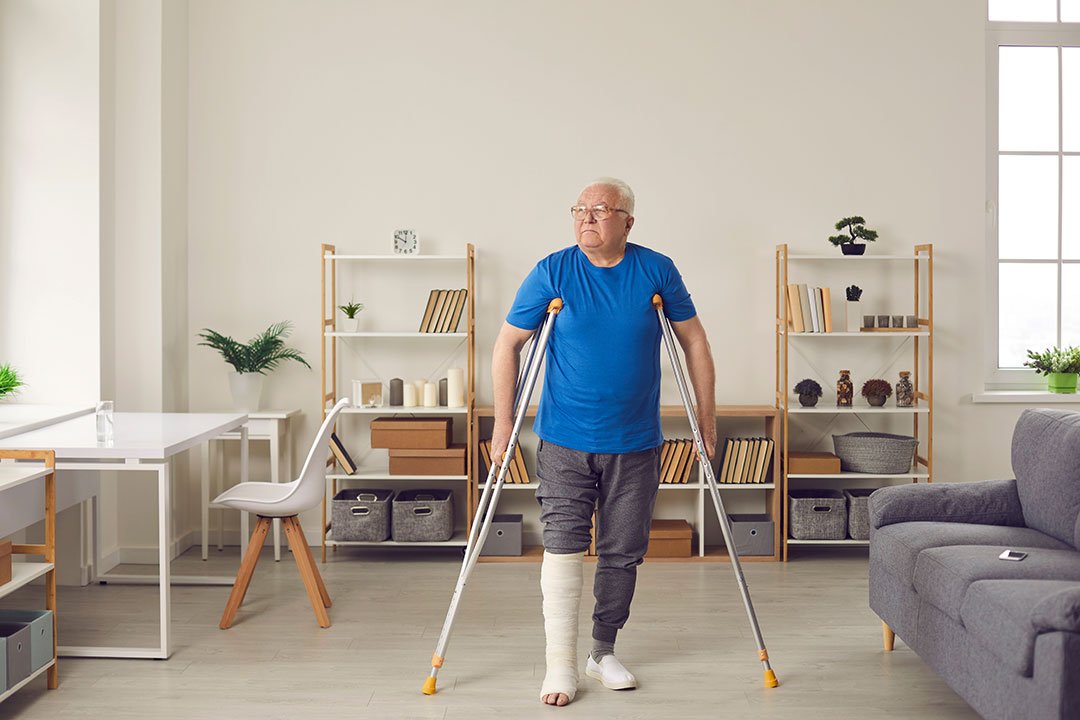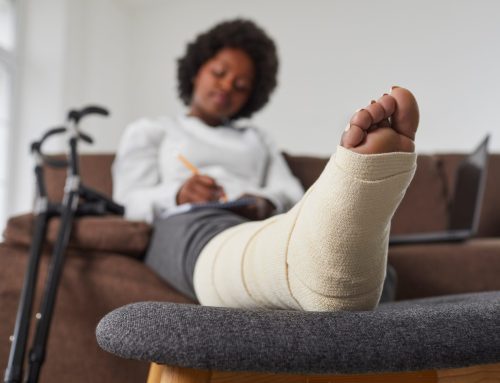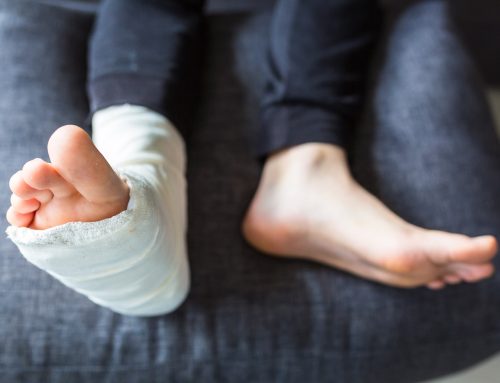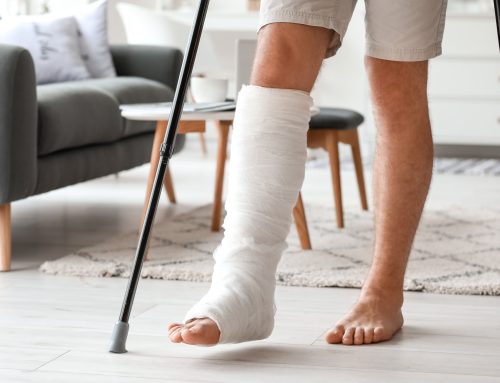Healing from a fracture can be a long and sometimes painful process. With limited mobility, it can be frustrating. After a few weeks, you may wonder if your fracture is healing and when you can return to pre-injury living. While your doctor will ultimately be the one to give you the fracture-free thumbs-up, there are several signs a broken bone is healing properly.
Read on to learn about five ways to tell that your fracture is healing, so you can be sure that you’re on the path to recovery.

5 Ways to Tell Your Fracture is Healing
Fractures can disrupt your lifestyle and limit your ability to work or enjoy everyday activities. As long as you follow your doctor’s recommendations, you can support your recovery instead of prolonging the process. Here are five signs a broken bone is healing.
Reduced pain and swelling.
Reduced pain and swelling are often the first and most obvious signs of fracture healing. After a fracture, you can expect to experience significant pain and swelling in the affected area. This pain and swelling are caused by inflammation and the body's natural response to the injury. As the body begins healing, you should notice a gradual reduction in these symptoms.
It's important to note that the rate at which pain and swelling decrease can vary depending on the severity of the fracture and the individual's healing process. For example, a hairline fracture may have less pain and swelling than a more severe break. Additionally, factors such as age, overall health, and previous injuries can impact how quickly the body heals from a fracture.
In the early stages of fracture healing, it's normal to experience some level of discomfort as the body is still working to repair the damage. However, as time passes and the healing process progresses, the pain and swelling should gradually decrease. It's important to monitor your pain and swelling levels and report any concerns to your doctor. If you experience severe pain or swelling that does not improve over time, it could be a red flag that your fracture is not healing correctly, and you should seek medical attention.
In some cases, your healthcare provider may prescribe pain medication or recommend over-the-counter pain relievers to help manage pain and swelling during the healing process. Ice and elevation can also be effective in reducing swelling and relieving discomfort. However, it's important to follow your healthcare provider's instructions and avoid over-reliance on pain medication, which can mask symptoms and slow down the healing process.
Increased mobility.
Another sign a broken bone is healing properly is an increased range of motion. Depending on the location and severity of the fracture, you may have limited mobility in the affected area. However, as the bone begins to heal, you should start to notice an improvement in your range of motion.
It's important to note that while you should expect some level of stiffness and limited mobility during the healing process, prolonged stiffness can be a sign of complications. If you notice that your range of motion is not improving or getting worse, it’s crucial to have a conversation with your doctor. They may recommend physical therapy or exercises to help improve your range of motion. These exercises can help to strengthen the muscles and improve flexibility, which in turn can aid in the healing process. It's important to follow your doctor’s recommendations and avoid overexertion or activities that could reinjure the affected area.
Decreased sensitivity to touch.
In the early stages of fracture healing, you may notice that the affected area is very sensitive to touch. However, this sensitivity should gradually decrease as the fracture begins to heal. If you continue to experience sensitivity to touch weeks or even months after your fracture, it may be a sign that your fracture is not healing properly.
Increased stability.
As new bone tissue forms, it helps to stabilize the fracture and provide increased support to the affected area. This can help to improve overall stability and reduce the risk of further injury. As your fracture heals, you may notice that you can put more weight on the affected area and engage in more physical activity without fear of further injury.
Return to normal activities.
One of the most exciting signs a broken bone is healing properly is the ability to return to normal activities. Depending on the severity of the fracture, it may take several weeks or even months to recover fully. However, as you progress through the healing process, you should gradually be able to resume normal activities without fear of further injury. If you're unsure whether returning to a particular activity is safe, it's always a good idea to consult with your healthcare provider first.
A fracture is a serious injury that requires treatment and care to ensure proper healing. Nearly 40,000 fractures have delayed healing time or failed to heal permanently. You can support your healing journey by administering a low-intensity pulsed ultrasound device for just 20 minutes per day, which can help your break heal 38% faster. Contact Fracture Healing to find out more.
If you’ve experienced a fracture, how long did it take to heal? What were the first signs that it was healing? Share your story with our readers in the comments below.





